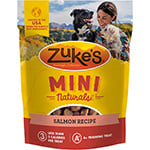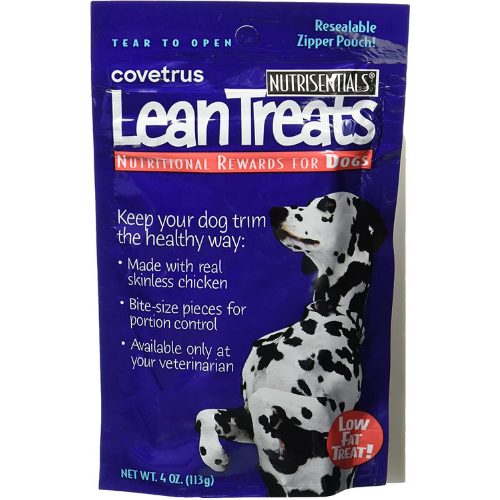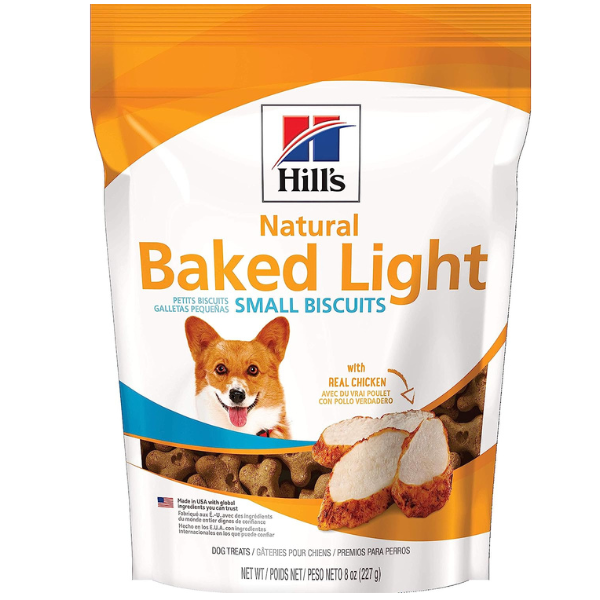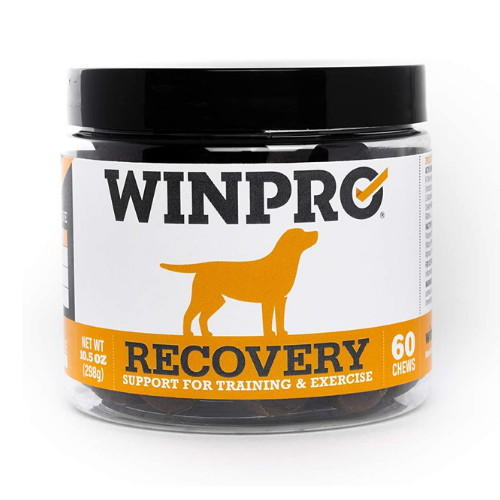
Training your dog is an amazing way to build your bond together, keep them mentally and physically exercised, and show off to your friends that your dog actually listens to you.
Typically, you have two things on hand when training: a clicker and treats. However, only one of those things has the potential to contribute to obesity and nutrient imbalances if overused. You might have guessed it’s not the clicker.
Too many dog treats = obesity
Treats are an essential part of positive reinforcement and rewards-based training, but you also need to be mindful to balance your dog’s treats with their overall daily calories. Give them too many treats, and you won’t just spoil their appetite for actual meals, but you could also make your dog overweight and unhealthy. Read on to learn how many treats are too many for your dog and how to best balance treats with your dog’s normal food.
Skip to:
The 10% Rule of Dog Treats
Treats should make up no more than about 10% of your dog’s daily calories.
For example, if your dog needs 400 calories per day (check out the resting rate calorie counter below), they should have no more than 40 calories from treats, with the other 360 coming from their normal food. This is just one reason why you shouldn’t feed your dog table scraps and people food, since 40 calories equate to about half a sniff of a McDonald’s burger, accidentally brushing against any menu item at Arby’s, or being in the same room as a bag of Doritos.
That means you need to be judicious in how you dole out treats, which can get tricky when training your dog, a time when you need to be able to offer as many rewards as possible.
Fortunately, there are some excellent low-calorie treat options and even healthy treat options, which are highlighted at the end of this article.
What’s the Difference Between Dog Treats and Dog Food?
Now that you know you shouldn’t give your dog more than 10% of their calories from treats, the obvious question is why. It’s a fair enough question, and the short answer is that there’s a big difference between the nutritional value (balance) of regular dog food and dog treats.
Think of it like human food: you wouldn’t want to have a ton of your daily calories come from candy — OK, you might want that, but you know you shouldn’t do so because you’re a super-responsible adult who only eats candy on special occasions like holidays and the months before and after holidays... plus the months in between.
 Treats are just that: treats. Your dog’s normal food, whether dry or wet, contains the correct balance of carbohydrates, fats, proteins, vitamins, minerals, and other nutrients they need to stay healthy. But treats are usually made with one goal in mind: to taste and smell awesome. (Granted, there are “supplement treats” designed to help calm dogs, provide joint support, digestive aid, dental care, and more. And there are other treats that are designed to have more nutritional value than usual but still be plenty appetizing to your dog.)
Treats are just that: treats. Your dog’s normal food, whether dry or wet, contains the correct balance of carbohydrates, fats, proteins, vitamins, minerals, and other nutrients they need to stay healthy. But treats are usually made with one goal in mind: to taste and smell awesome. (Granted, there are “supplement treats” designed to help calm dogs, provide joint support, digestive aid, dental care, and more. And there are other treats that are designed to have more nutritional value than usual but still be plenty appetizing to your dog.)
There are two main problems with a diet that’s too heavy on the treats:
- Nutrient and calorie imbalance
- A reduced interest in actual dog food
If you think of your dog’s food like a well-balanced, nutritionally complete dinner, then think of treats like dessert. And if you eat a big bowl of ice cream at 4 p.m., you’re not going to want that well-portioned and properly balanced dinner, plus you’re gonna need a major nap before dinner.
How Many Calories Are in Dog Food?
Most bags of dry dog food and cans of wet food will include the caloric information, just like you’d find on human food. However…
- A “cup” of food does not mean a coffee mug or other cup around the home. Specifically, it’s one measuring cup, as in the cup in your baking cabinet. If you have a special pet food scoop, check the measurement lines on the side to see exactly how much food it holds. Using the proper measurement tool allows you to calculate the calories your dog gets from each scoop.
- Counting calories can be confusing, and pet-food manufacturers don’t help. Here’s the skinny on calories. A “Calorie” is technically 1,000 “calories.” A “kcal” is technically one “Calorie” or 1,000 “calories.” But some pet food labels are a little loosey-goosey with technical terms, and you'll have to use your best judgment. For example, if the label states 350 kcal per cup, it’s safe to assume they mean 350 calories per cup and not 350,000 calories per cup. (FYI: If you feed your dog — or any living thing — 350,000 calories, they will almost certainly explode.) Long story short, the terms kcal and calorie are usually interchangeable when it comes to dog food.
How to Estimate Resting Calorie Needs
Before you start tossing treats, you’ll need to know how many calories (or kcal) your dog needs per day. For this, we start with a baseline resting calculation. This is the approximate number of kcal a dog needs to maintain body functions while at rest.
Note, this is just the kcal a dog needs to minimally function. Exercise will require more kcal, as would pregnancy or certain illnesses. If you have a particularly energetic dog, or if you and your dog get a lot of exercise and play every day (which you definitely should do), you’ll need to adjust accordingly; i.e., add more kcal, but still within reason and while keeping an eye on your dog’s weight and “body condition score.”
This calculation is an approximation and won’t be exact for all dogs. Use it as a guide, but always check with your vet to make sure your dog is getting the correct amount of energy (i.e., number of kcal) and is at their ideal body condition.
How to Calculate a Dog’s Resting Energy Requirement (RER)
Here's the formula to calculate your dog's RER so you can figure out how many treat calories they're allowed.
[Body weight (in kilograms) x 30] + 70 = Resting energy requirement in calories (kcal)
Dog Daily Treat-Calorie Calculator
Daily Calories Your Dog Can
Have From Treats (approx.)
Based on this formula, for example, a healthy 10-pound dog would need about 205 calories per day for resting energy requirements, so you could give them about 21 calories in treats, or roughly 9 Zuke's Minis per day (I'll explain at the end of the article why these treats are so awesome). If you have a larger dog, say 30 pounds, they could have about 48 calories per day from treats or about 21 Zuke's Minis.
Or you can just skip the math and use our calculator to figure out how many treat calories your dog can have per day. Just enter your dog’s weight in pounds, and it will do the rest of the work for you.
How to Estimate a Dog’s Daily Calorie Needs Based on Their Age, Medical Status, etc.
Things get tricky when you try to calculate your specific dog’s actual daily kcal needs (“Metabolic Energy Requirement,” or MER), as there are many factors that influence a dog’s actual daily energy needs. Those factors include the dog’s:
- Age (growing puppy vs. active adult vs. sedentary senior, etc.)
- Reproductive status (spayed/neutered vs. intact, pregnant vs. not)
- Medical conditions (e.g., diabetes, under/over-active thyroid, cancer, etc.)
- Activity level (e.g., couch potato vs. weekend warrior vs. working herding dog, etc.)
- Weight and body condition score (underweight vs. ideal weight vs. overweight)
- Environmental conditions (e.g., an outdoor dog vs. an indoor dog or a dog that lives in a warmer region vs. a dog that lives in a cooler region)
Determining your dog’s MER can be done, but much like trying to figure out their RER, the calculations will only give you estimates and not the end-all, be-all for your dog’s daily energy needs. Plus, your dog’s MER can change from week to week, or even day to day, depending on the factors listed above.
The chart below comes from the Ohio State University Veterinary Medical Center. To use it, take your dog’s resting energy requirement (RER), find the best description of your dog from the column on the left, and multiply the RER by the number in the right column to get their (estimated) metabolic energy requirement (MER). However — and this is a big however — your dog’s actual necessary daily calories could vary by as much as 50%. So use these values as a general guide, but talk to your vet to get the real scoop on how much and what type of food to give your dog.
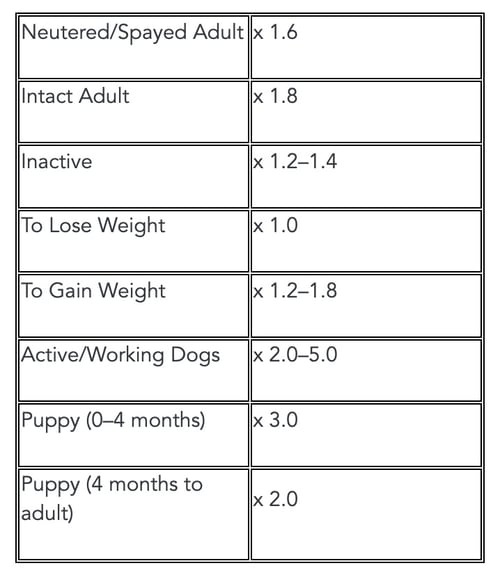
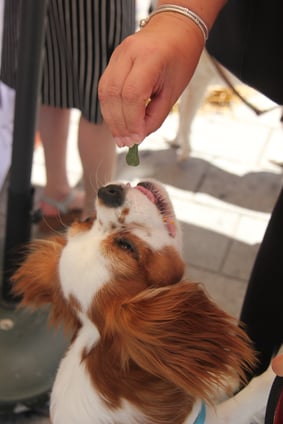
Some of Our Favorite Low-Calorie Treats for Dog Training
The fewer the calories in the treat, the more you can give your dog without breaking the 10% rule.
Depending on your dog — specifically, how motivated they are by food — you might be able to use certain vegetables as treats. Seriously. Some dogs go bananas for small pieces of banana, carrot, cucumber, apple, or even the ends of green beans that we pop off and don't want to eat (but never give your dog grapes, raisins, or currants, which can cause acute kidney failure).
Note that some dogs may have a tough time digesting the acid in apples and other fruits, so pay attention to how your dog reacts.
It helps to make your dog work for these healthy options a little. Ask them to do something, like “sit,” then give the treat, so they think of it as a reward during training rather than something gross and healthy like fruits or vegetables.
If you have a dog that’s into carrots or apples, great. If not, try out these alternative treat ideas.
- Ordinary Kibble: Set aside a portion of your dog’s regular meals for training. This way, all of your dog’s calories come from their regular food. Many dogs will happily accept ordinary kibble as a reward unless they’re working on something tricky that requires high-value treats (for instance, small pieces of cheese or freeze-dried liver aren't low-calorie but are especially tasty to dogs and can be used to treat things like travel anxiety).
- Cheerios: Stay away from the honey nut, frosted, or other special flavors. At roughly 0.2 kcal per Cheerio, you can give your dog a hefty dose of these without breaking their treat-calorie limit.
- Popcorn: Use plain, air-popped popcorn that doesn’t have any butter or salt. One cup of plain popcorn clocks in at about 31 kcal.
Lastly, keep in mind that you can break treats into smaller pieces. Dogs are more concerned with the act of getting a treat than its size. They'll just as happily take half a treat or even a quarter of treat.
What dogs really want is the dopamine kick in their brain
that says, "I do good, I get a nummy."
Zuke’s Mini
Zuke’s Mini treats are a big hit with many of the Preventive Vet pups, and they’re awesome for dog training, given their small size and low kcal count. They're only 2.3 kcal per treat.
Lean Treats
Not only do these great treats come in at just 7 kcal per treat, but they’re also easy to break up into smaller pieces. And dogs love them.
Hill's Baked Light Small Biscuits
At 8 kcal each, these baked treats are easy to break into smaller pieces and are great for small dogs or puppies. If you buy the medium-sized treats, they are 34 kcal per treat.
Post-Exercise Blood Protein Supplements
While these should not be given as treats (because the recommended dose is only one or two per day), supplements that use blood proteins that are rich in immunoglobulins may help reduce inflammation, promote healing, and provide other benefits for dogs. The WINPRO line of supplements (Immunity, Mobility, Allergy, Focus, Training) has been met with very positive feedback from dog owners.
In our own experience, our dogs loved the taste of the WINPRO supplements. You only give your dog one or two (depending on their weight) each day, so a bag of 60 will last you 1–2 months. You should not give your dog more than the recommended amount.


